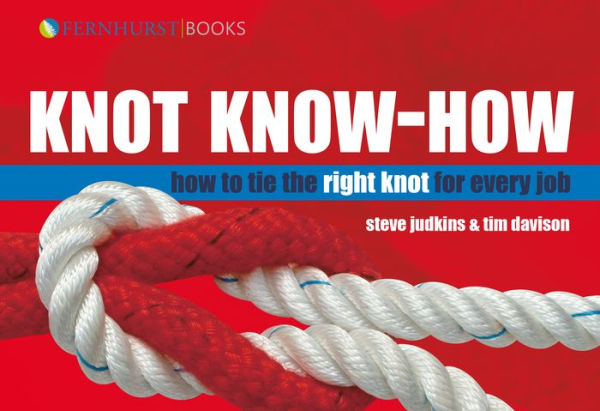Read an Excerpt
Welcome to KNOT KNOW-HOW
This book begins with the ten knots everyone should know (pages 10 to 29). It then gives lots of other knots, arranged by use (e.g. knots for tying a rope
to an object). Finally, we show how to whip (stop
the end of a rope unwinding), seize (sew or bind two ropes together), splice (join ropes permanently), taper and handle ropes.
Terms
Bend - A bend joins two ropes.
Hitch - A hitch is used to attach a rope
to something else, eg a post.
Splice - A splice is used to make an eye or
a join without tying a knot. It works on friction. It doesn't weaken the rope as much as a knot.
Seizing - Joining ropes together by sowing or binding.
Whipping - A thin line used to stop a rope’s end unlaying (unwinding).
Lay
- The direction of twist of a rope’s strands.
Loop - A complete turn, with a cross-over.
Bight - An incomplete loop.
Stopper knot - A knot which stops a rope
being pulled through an eye.
Swedish fid – A grooved spike for splicing rope.
Coil – To twist a rope into a series of loops.
Thimble - A metal fitting put into an eye
(to reduce wear).
Knot basics
A half hitch is the start of many knots. So is a round turn.
Security
Length of tail - Always work the knot tight, leaving a good tail.
Strength - A knot reduces the strength of a rope. (Some knots may almost halve the strength.)
Undoing a knot
Some knots can be capsized – eg a reef knot.
Hold the standing part and pull back the nearest end. You can then slide the knot off the rope.
ROPES
Ropes can be made from a range of materials.
The table on page 8 lists some of these, and the properties of the ropes.
Once the fibres have been chosen, they can be put together in a number of ways to make a rope. The most common ropes are 3-strand laid, 8-strand braid and core-plus-cover (see page 9).
Pre-stretched rope
The rope is stretched in the factory.
When you use it later, it won't stretch so much.
Wear
Wear causes broken fibres, or can even melt the fibres together. To avoid this, lead ropes properly so they don't go round sharp corners. Be careful with core-plus-cover ropes: the strength is in the core, but it's hidden by the cover.
Sunlight
The ultra violet in sunlight is bad for ropes.
Measuring ropes
The thickness of a rope is given as the diameter
in millimetres. (Ropes used to be measured around the circumference, in inches.)
Choosing a rope
1. First decide on the strength you need.
2. Then decide how much stretch you need.
3. Do you want the rope to float or sink?
4. Do you need a soft rope (for easy handling?)



